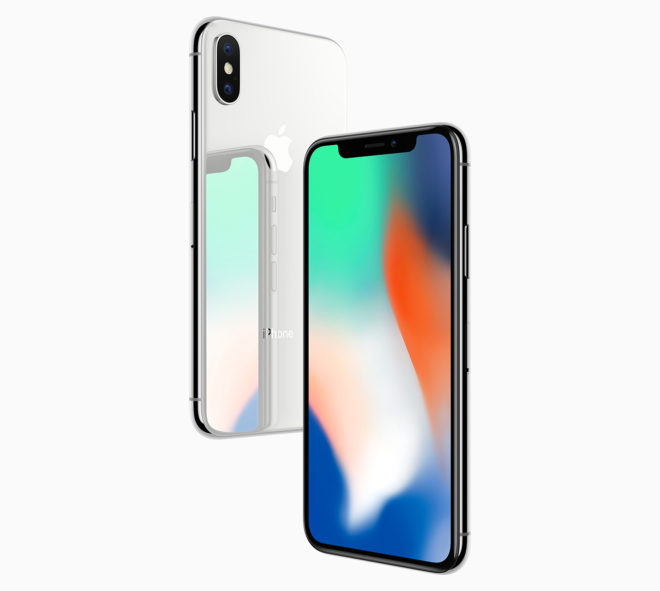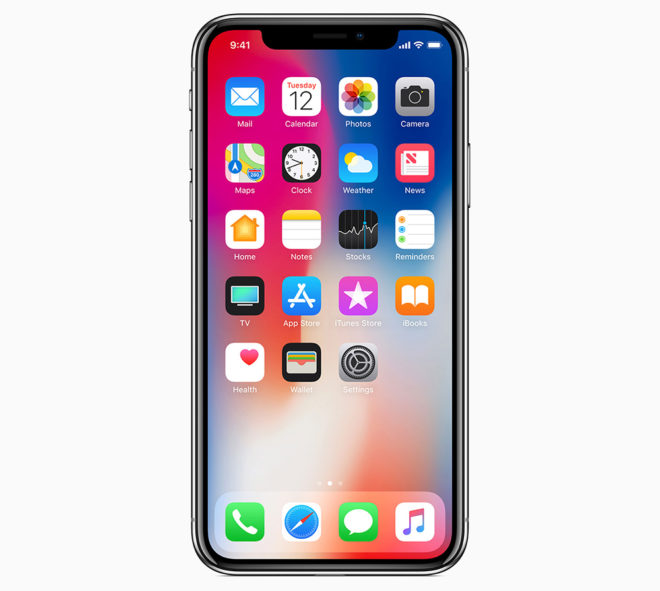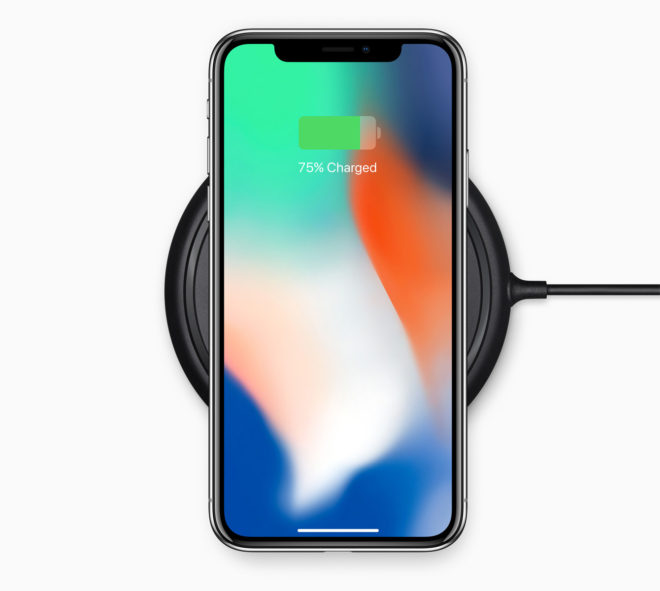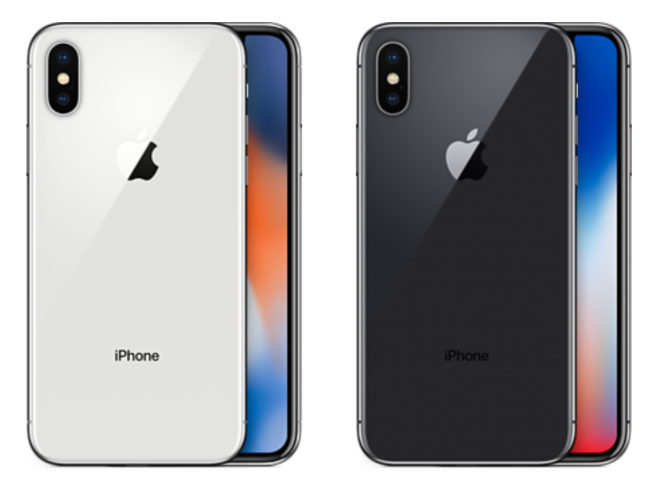iPhone X debuts with 5.8-inch edge-to-edge display and dual 12MP rear cameras

The year 2017 is the 10th anniversary of the iPhone, and Apple celebrated with an all-new model called iPhone X.
iPhone X (pronounced “iPhone Ten”) features a 5.8-inch edge-to-edge OLED Super Retina display with curved edges. It’s got a resolution of 2436×1125 and offers tech like HDR, True Tone to adapt the screen color and intensity to your ambient light, and 3D Touch.
At the top of that display is a notch that’s home to the 7-megapixel front-facing TrueDepth camera as well as an array of sensors for the new Face ID feature. Face ID, which is taking the place of Touch ID on the iPhone X, uses a dot projector, infrared camera, and flood illuminator to map and recognize your face. You can then use Face ID to unlock your iPhone X by looking at it and to authenticate Apple Pay.

Apple is also using all of those face-tracking features for Animoji. As the name suggests, these are animated emoji characters that track your facial movements. There are 12 different Animoji characters, including a panda, unicorn, and a pile of poop, and you can record them with voice and send them to friends.
Around back, iPhone X has dual 12-megapixel cameras. There’s a wide angle sensor with an f/1.8 aperture and one telephoto sensor with an f/2.4 aperture, and both cameras include a new color filter and optical image stabilization. The cameras are also tuned for augmented reality, which Apple is making a big push for with its ARKit, and there’s support for 4K 60fps and 1080p 240fps video capture as well.
The iPhone X body is made up of glass on the front and back and a stainless steel band. Inside that body, which is dust and water resistant, Apple has included its new A11 Bionic chipset which offers two performance cores and four high-efficiency cores. Also included is LTE Advanced support and Bluetooth 5.0.

When it comes to the battery, Apple says that iPhone X will last two hours longer than iPhone 7. And when it’s time to top up, you can use the iPhone X’s new wireless charging capability, which uses the Qi wireless charging standard.
Also of note is that the iPhone X will support LTE band 66 but not LTE band 71, the latter of which is T-Mobile’s new 600MHz spectrum. Here’s the full list of the iPhone X’s supported cellular bands:
- FDD-LTE (Bands 1, 2, 3, 4, 5, 7, 8, 12, 13, 17, 18, 19, 20, 25, 26, 28, 29, 30, 66)
- TD-LTE (Bands 34, 38, 39, 40, 41)
- TD-SCDMA 1900 (F), 2000 (A)
- CDMA EV-DO Rev. A (800, 1900, 2100 MHz)
- UMTS/HSPA+/DC-HSDPA (850, 900, 1700/2100, 1900, 2100 MHz)
- GSM/EDGE (850, 900, 1800, 1900 MHz)
The iPhone X will be available for pre-order starting October 27th and will launch on November 3rd. Pricing will start at $999 for the 64GB model and go up to $1,149 for the 256GB model. Color options will include Silver and Space Gray.

T-Mobile has confirmed that it’ll carry the iPhone X, but it has no pricing details to share right now. T-Mo does say that for a limited time, customers can trade in an iPhone 6 or newer and get up to $300 off (via 24 monthly bill credits) an iPhone 8, iPhone 8 Plus, or iPhone X when they buy on EIP.
What do you think of Apple’s attempt at a smartphone with an edge-to-edge display? Are you thinking about buying an iPhone X?
